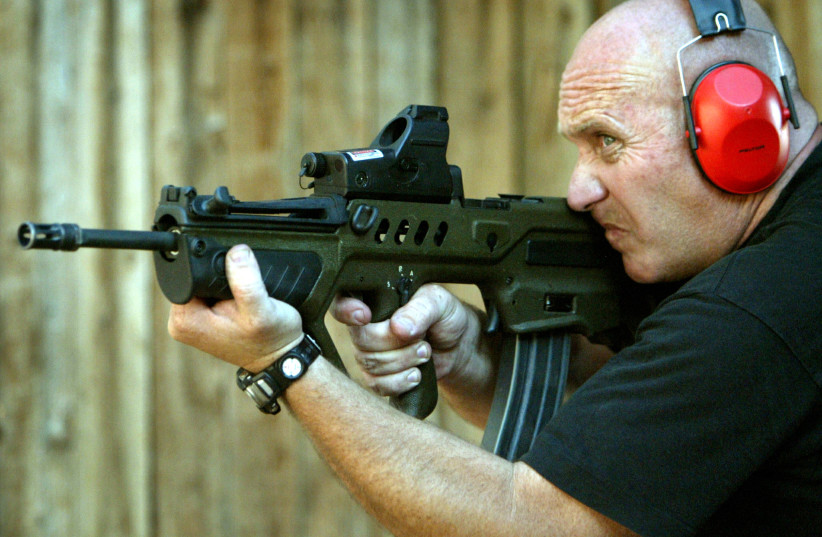
As the US military works to replace the M-4 rifle, the Israeli military has decided to revert back to the Vietnam-era rifle instead of the Israeli-made Tavor.
The decision comes less than 20 years after the Tavor rifle became the IDF’s primary assault rifle. The Tavor will be given to reserve brigades while regular infantry brigades will go back to using the M-4.
The outgoing Head of the Weapons Department in the IDF's Ground Forces, Col. Arik Avivi was quoted in Israel Hayom as saying that the reason behind the military’s decision was that the M-4 is an excellent weapon.
"Quite a few armies in the world use this rifle, and for good reason - it's an excellent weapon,” he said.
The IDF Spokesperson’s Unit told The Jerusalem Post that while the Tavor won’t be taken out of service, the M-4 will be given to troops.
“As part of the annual work plan, work is carried out to optimize and utilize the weapons of combat units, which weighs considerations of economic uniformity, suitability for the forces’ purpose, regular-reserve unit compatibility, and so on,” the statement read.
The military said that “no decision has been made to remove Micro Tavor weapons from use in the IDF, nor is such a decision expected. Moreover, the IDF is currently going out to purchase additional Tavors. The Tavor is used by the IDF's combat units very effectively, and will continue to be used in the future.”
Manufactured by Israel Weapons Industries, it was designed by IWI to be a more reliable, versatile, and technologically advanced weapon to an answer to the shift in battlefield dynamics, terrorism, and extreme combat environments.
It is made with high-strength, impact-modified polymer, its metal parts are corrosion resistant and it comes with replaceable barrels available in two lengths. Measuring some 28 inches long it weighs about 9 pounds, it is characterized by enhanced accuracy and a longer life cycle.
Designed to be more reliable and durable with minimum operator maintenance, it has a compact bullpup configuration enabling the rapid acquisition of target and using the long-stroke piston-operated system it can fire approximately 600~900 rounds per minute.
The first unit to received the Tavor was the Givati Brigade in 2006 followed by the Nahal and Golani Brigades in 2008 and then the Kfir and Paratroopers Brigades.

The Tavor has been used by troops in several wars and military operations including the 2006 Second Lebanon War, Operation Cast Lead in 2008-2009, Operation Pillar of Defense in 2012, and Operation Protective Edge in 2014.
Following the 2014 war, the IDF adopted the improved Micro-Tavor that has a 5.56mm and 9mm configurations as well as an extended 380mm barrel to enhance the range and accuracy of the rifle.
IWI has since manufactured various calibers of the Tavor, the 9X19mm, 5.45X39mm, 5.56X45mm, 300BLK, and the TAVOR-7 in 7.62X51mm, all with different barrel lengths and configurations.
The Tavor is also in use by government bodies, law enforcement officers, and police SWAT teams worldwide, exported to over 30 countries including Columbia, Georgia, Guatemala, India, Portugal and Thailand.
The American-made M-4 carbine rifle was first used during the Vietnam War and is the standard issue firearm for most units in the US military.
The lightweight, shoulder-fired weapon provides troops operating in close quarters with improved handling and the capability to rapidly and accurately engage targets at extended range, during the day and or at night.
Though the IDF has decided to revert back to the M-4 instead of the Tavor, the US Army is currently working on replacing the rifle with the intention to buy the new automatic infantry weapons starting in 2022.
Three companies, Sig, Textron Systems and General Dynamics are currently competing for contracts in the Army's Next Generation Squad Weapon.
The winning tender will manufacture at least 100,000 rifles chambered for a specially designed longer-range and lighter-weight 6.8mm projectile instead of the M4’s 5.56mm ammunition.
According to a report in Popular Mechanics, the Army is concerned that the 5.56mm ammunition has “reached the end of the line” in terms of its lethality, range, and weight savings.







